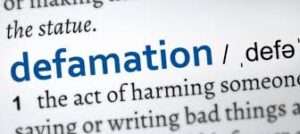
Introduction
Every year on September 16th, the world comes together to celebrate World Ozone Day, a day dedicated to raising awareness about the importance of the ozone layer and the need to protect it. This day serves as a reminder of the pivotal role that the ozone layer plays in safeguarding life on Earth and the collective efforts made to heal the damage it has endured over the years.
The Meaning of the Ozone Layer
The ozone layer is a region of the Earth’s stratosphere that contains a relatively high concentration of ozone (O3) molecules. This layer is situated approximately 10 to 30 kilometers above the Earth’s surface and serves as a vital shield against the harmful ultraviolet (UV) radiation emitted by the sun. The ozone molecules in this layer absorb and scatter the majority of the sun’s harmful UV-B and UV-C rays, preventing them from reaching the Earth’s surface.
Without the ozone layer, life on Earth as we know it would be in grave danger. Increased exposure to UV radiation can lead to numerous health problems in humans, including skin cancer, cataracts, and a weakened immune system. It can also harm ecosystems, causing damage to marine life, plants, and phytoplankton, which are crucial for regulating our planet’s carbon dioxide levels.
India’s Initiative to Protect the Ozone Layer
India, like many other countries, has been actively engaged in initiatives to protect the ozone layer. One of the key measures taken by India is the implementation of the Montreal Protocol on Substances that Deplete the Ozone Layer.
This international treaty, adopted in 1987, aims to phase out the production and consumption of ozone-depleting substances (ODS). India has consistently worked towards meeting its commitments under this protocol by reducing the production and consumption of ODS, promoting the use of environmentally friendly alternatives, and ensuring the proper management and disposal of ODS.
Global Initiatives to Protect the Ozone Layer
Several global initiatives have played a pivotal role in the protection of the ozone layer. The Montreal Protocol, mentioned earlier, has been highly successful in reducing the production and use of ODS worldwide. It has led to the phase-out of substances like chlorofluorocarbons (CFCs) and halons, which were major contributors to ozone depletion.
In addition to the Montreal Protocol, other international agreements, such as the Kyoto Protocol and the Kigali Amendment to the Montreal Protocol, have addressed the interconnected issues of ozone depletion and climate change. The Kyoto Protocol focused on reducing greenhouse gas emissions, including those from substances that have ozone-depleting potential. The Kigali Amendment aims to phase down hydrofluorocarbons (HFCs), which are widely used as ODS replacements but are potent greenhouse gases.
The Discovery of the Ozone Layer
The term “ozone” was coined by the German chemist Christian Friedrich Schönbein in 1840. However, it wasn’t until the early 20th century that the concept of the ozone layer was fully understood. In 1913, French physicists Charles Fabry and Henri Buisson first detected the presence of ozone in the Earth’s atmosphere using spectroscopy.
The Montreal Protocol: Healing Earth’s Ozone Layer
The Montreal Protocol on Substances that Deplete the Ozone Layer is an international environmental treaty that has played a pivotal role in safeguarding the Earth’s ozone layer. Adopted on September 16, 1987, in Montreal, Canada, the protocol is widely regarded as one of the most successful environmental agreements in history. Here, we will delve into the in-depth details of the Montreal Protocol, its background, objectives, key provisions, achievements, and ongoing challenges.
Background: The Ozone Layer Crisis
In the mid-20th century, scientists began to realize that human-made chemicals were posing a significant threat to the Earth’s ozone layer. The ozone layer, located in the stratosphere, contains a concentration of ozone (O3) molecules that absorb and filter out the majority of harmful ultraviolet (UV) radiation from the sun. This natural shield is crucial for protecting life on Earth from the harmful effects of excessive UV radiation.
The primary culprits in ozone depletion were chlorofluorocarbons (CFCs), halons, carbon tetrachloride, and other ozone-depleting substances (ODS) widely used in refrigeration, air conditioning, aerosol propellants, and fire extinguishers. When released into the atmosphere, these chemicals would eventually rise to the stratosphere, where they would break down, releasing chlorine and bromine atoms. These atoms, in turn, catalyzed the destruction of ozone molecules.
As the scientific evidence of ozone depletion mounted, concerns grew about the potential consequences, including increased rates of skin cancer, cataracts, and harm to ecosystems. The need for international cooperation to address this global issue became increasingly urgent.
Objectives of the Montreal Protocol
The Montreal Protocol’s main objectives are:
- To phase out the production and consumption of ODS: The treaty seeks to gradually reduce and eliminate the use of substances that deplete the ozone layer, with specific timelines for different categories of ODS.
- To promote the development and use of alternatives: The protocol encourages the development and adoption of environmentally friendly substitutes for ODS that have lower ozone-depleting potential.
Key Provisions and Achievements
- Phasing Out ODS: The protocol establishes a timeline for the phase-out of various ODS, with developed countries taking the lead and developing countries following suit on a delayed schedule. This approach takes into account the differing capacities and economic situations of nations.
- Financial Mechanism: The Montreal Protocol includes provisions for financial and technical assistance to help developing countries meet their obligations. The Multilateral Fund for the Implementation of the Montreal Protocol was established to provide financial support for projects that reduce ODS consumption.
- Amendments and Adjustments: Over the years, the protocol has undergone several amendments and adjustments to accelerate the phase-out schedules and add new substances to the list of controlled chemicals.
- Technology Transfer: The protocol promotes the transfer of ozone-friendly technologies to developing countries to facilitate their transition away from ODS.
Achievements and Ongoing Challenges
The Montreal Protocol has achieved remarkable success in its mission to protect the ozone layer. As a result of its implementation:
- The production and consumption of the majority of ODS have been significantly reduced.
- The ozone layer is showing signs of recovery, with projections indicating that it will return to pre-1980 levels by mid-century.
- The protocol has had positive co-benefits for climate change mitigation, as many ODS are also potent greenhouse gases.
However, there are ongoing challenges:
- The continued monitoring of ODS and enforcement of phase-out schedules.
- The management and disposal of existing ODS stockpiles.
- The emergence of new chemicals with ozone-depleting potential.
- Balancing the phase-out of ODS with energy efficiency and the use of alternative technologies.
In conclusion, the Montreal Protocol stands as a shining example of global cooperation to address a pressing environmental issue. Its success demonstrates the capacity of nations to come together, take action, and make a positive impact on the planet. As we continue to face environmental challenges, the Montreal Protocol serves as a model for effective international collaboration in the quest to protect our planet and secure a sustainable future for all.
The Kyoto Protocol: A Milestone in Combating Climate Change
The Kyoto Protocol is an international treaty designed to address the issue of global climate change by reducing greenhouse gas emissions. Adopted in Kyoto, Japan, on December 11, 1997, and entered into force on February 16, 2005, the protocol is part of the United Nations Framework Convention on Climate Change (UNFCCC) and represents a crucial milestone in global efforts to combat climate change. Here is an in-depth look at the Kyoto Protocol:
Background and Context:
The Kyoto Protocol emerged from growing concerns about the impacts of human activities, particularly the burning of fossil fuels, on the Earth’s climate system. It was the first international agreement that legally bound developed countries to specific targets for reducing their greenhouse gas emissions. The protocol’s primary goal was to limit the increase in global average temperature to less than 2 degrees Celsius above pre-industrial levels, a threshold believed to avoid the most catastrophic effects of climate change.
Key Provisions and Mechanisms:
- Greenhouse Gas Emission Reduction Targets: The Kyoto Protocol established legally binding emission reduction targets for developed countries (known as Annex I countries). These countries were required to reduce their combined greenhouse gas emissions by an average of 5.2% below 1990 levels during the first commitment period, which lasted from 2008 to 2012.
- Flexible Mechanisms:
- Emissions Trading (ET): Annex I countries could trade emissions allowances among themselves. This allowed countries that could reduce emissions more easily and cost-effectively to sell excess allowances to countries struggling to meet their targets.
- Clean Development Mechanism (CDM): Annex I countries could invest in emission reduction projects in developing countries and count those reductions toward their own targets. This mechanism aimed to encourage sustainable development in developing nations.
- Joint Implementation (JI): Similar to the CDM, JI allowed Annex I countries to invest in emission reduction projects in other Annex I countries and count the reductions toward their own targets.
- Commitment Periods: The Kyoto Protocol established different commitment periods during which Annex I countries had to meet their emission reduction targets. The first commitment period was from 2008 to 2012, and subsequent periods were under negotiation.
- Compliance Mechanism: The protocol included mechanisms to ensure that countries were meeting their commitments and penalize those that did not. This included regular reporting and review processes.
Challenges and Criticisms:
While the Kyoto Protocol represented a significant step in addressing climate change, it faced several challenges and criticisms:
- Limited Scope: The protocol covered only a subset of countries (Annex I), excluding major emitters like the United States and developing countries with rapidly growing emissions like China and India.
- Emissions Growth: Some countries failed to meet their targets, and global emissions continued to rise during the first commitment period.
- Flexibility Mechanisms Concerns: Critics argued that emissions trading could lead to “hot air” trading, where countries with low emissions could sell excess allowances without making real emissions reductions.
- Uncertainty About Future Commitment Periods: The lack of a clear pathway for future commitments after the first period raised uncertainty and limited long-term planning.
Legacy and the Paris Agreement:
The Kyoto Protocol set the stage for subsequent international climate negotiations and agreements, including the Paris Agreement, adopted in 2015. The Paris Agreement builds on the foundation laid by the Kyoto Protocol and takes a more inclusive and flexible approach, with all countries committing to take climate action based on their own nationally determined contributions (NDCs).
In conclusion, the Kyoto Protocol marked a significant milestone in the global effort to combat climate change. It introduced legally binding emission reduction targets and innovative mechanisms to address greenhouse gas emissions. While it faced challenges and limitations, it paved the way for further international climate agreements, including the Paris Agreement, which seeks to strengthen global climate action and limit global warming.
The Kigali Agreement: Phasing Down HFCs for a Cooler Climate
The Kigali Amendment to the Montreal Protocol, often referred to simply as the Kigali Amendment or Kigali Agreement, is an international treaty designed to address the phase-down of hydrofluorocarbons (HFCs), which are potent greenhouse gases commonly used in air conditioning, refrigeration, and other applications. The Kigali Amendment was adopted on October 15, 2016, in Kigali, Rwanda, as an extension of the existing Montreal Protocol on Substances that Deplete the Ozone Layer. Here are the key details of the Kigali Agreement:
Background and Context:
HFCs were developed and used as alternatives to ozone-depleting substances (ODS) like chlorofluorocarbons (CFCs) and hydrochlorofluorocarbons (HCFCs), which were phased out under the Montreal Protocol due to their harmful effects on the ozone layer. While HFCs do not deplete the ozone layer, they have a high global warming potential (GWP) and contribute significantly to climate change when released into the atmosphere.
Recognizing the need to address the environmental impact of HFCs, negotiations for the Kigali Amendment began in earnest, culminating in its adoption in 2016.
Key Provisions of the Kigali Amendment:
- Phasing Down HFCs: The central goal of the Kigali Amendment is to gradually reduce the production and consumption of HFCs worldwide. It establishes a phasedown schedule with specific reduction targets and timelines for developed and developing countries.
- Financial and Technical Assistance: Similar to the Montreal Protocol, the Kigali Amendment includes provisions for financial and technical support to help developing countries transition away from HFCs, adopt alternative technologies, and improve energy efficiency.
- Differentiated Responsibilities: Like the Montreal Protocol, the Kigali Amendment recognizes the principle of “common but differentiated responsibilities,” meaning that developed countries take the lead in reducing HFC emissions and providing support to developing countries.
- Market-Based Approaches: The amendment encourages the use of market-based approaches, such as emissions trading, to help countries meet their phasedown commitments.
- Co-Benefits for Ozone Layer Protection: The Kigali Amendment aligns with the goals of the Montreal Protocol by encouraging the adoption of alternative substances with lower ozone-depleting potential.
Impact and Significance:
The Kigali Amendment is a significant international agreement because it addresses both climate change and ozone layer protection simultaneously. By reducing HFC emissions, it contributes to the mitigation of global warming, aligning with the goals of the Paris Agreement. Furthermore, it aligns with the Sustainable Development Goals (SDGs) by promoting sustainable consumption and production patterns and improving energy efficiency.
Ratification and Implementation:
For the Kigali Amendment to enter into force and become legally binding for parties to the Montreal Protocol, it needed to be ratified by a specific number of countries. This milestone was achieved in late 2017, and the amendment officially entered into force on January 1, 2019.
Since then, countries around the world have been taking steps to implement the phasedown of HFCs according to the amendment’s provisions. This includes setting national targets, enacting regulations, and transitioning to alternative technologies that have lower climate impacts.
In conclusion, the Kigali Amendment to the Montreal Protocol represents a crucial step in addressing climate change by tackling the emissions of high-GWP HFCs. It demonstrates international cooperation to combat both ozone depletion and global warming, highlighting the importance of aligning environmental and climate goals for a sustainable future.
SDG Viewpoint
From the perspective of the United Nations’ Sustainable Development Goals (SDGs), protecting the ozone layer aligns with several goals. It directly contributes to Goal 13 (Climate Action) by addressing ozone-depleting substances that also impact climate change. Additionally, it supports Goal 3 (Good Health and Well-being) by reducing the harmful effects of increased UV radiation on human health. Furthermore, safeguarding the ozone layer helps achieve Goal 14 (Life Below Water) and Goal 15 (Life on Land) by preserving marine and terrestrial ecosystems, which are sensitive to UV radiation.
In conclusion, World Ozone Day serves as a crucial reminder of the importance of the ozone layer and the collective global efforts to protect it. While significant progress has been made, continued vigilance and action are necessary to ensure the full recovery of this vital shield for the benefit of current and future generations. Through international agreements like the Montreal Protocol and a commitment to sustainable development, we can strive to protect the ozone layer and create a safer, healthier planet for all.







